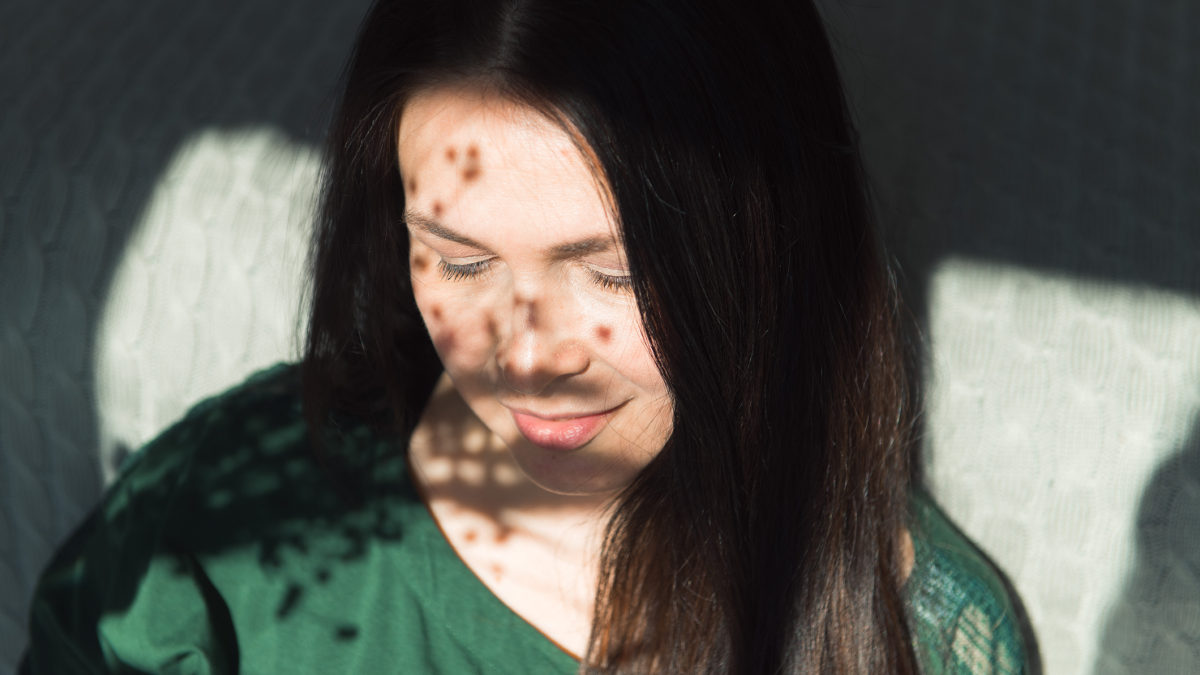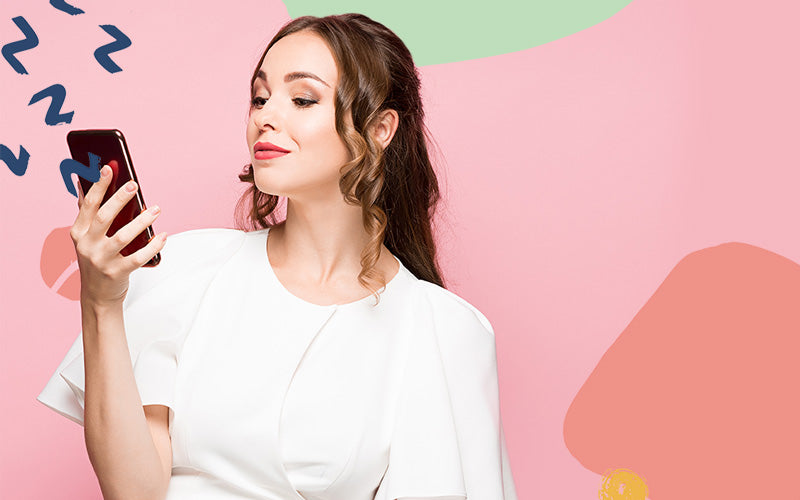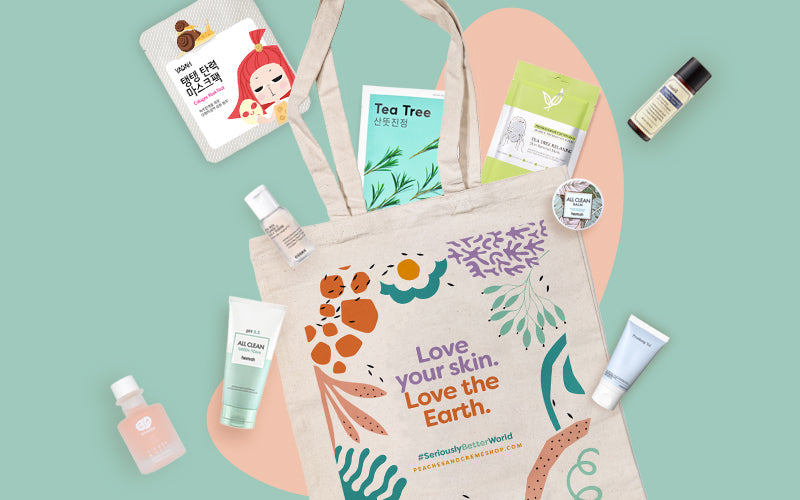A Beginner’s Guide to Retinol
Retinol is a superstar in the world of skincare because of how it keeps your skin clear, youthful, and healthy. However, there are often a mountain of warnings and instructions tacked onto its usage and it can get incredibly confusing, especially for beginners.
Never fear because Peaches&Crème is here! We’ve prepared a beginner-friendly guide for those who want to get in on the retinol action. Read on to find out what this hailed ingredient is, how it can help improve your complexion, and how to gently ease your skin into using retinol.

What is retinol?
Retinol is a type of retinoid and a derivative of vitamin A—an organic compound which our skin can easily absorb. It is a mid-strength retinoid which means it is gentler on your skin compared to its siblings (tretinoin, tazarotene, etc.) and does not need a prescription. It takes more time to show results but the rewards are worth the wait because this active ingredient is known as the gold standard in well-aging skincare.
💡 Actives are skincare ingredients with specific purposes, targeting particular skin concerns.
Retinol boosts the turnover rate of skin cells, getting rid of dead skin cells and accelerating the growth of new, healthy ones. This process increases the thickness of the epidermis (the top most layer of your skin) which, in turn, makes your skin firmer and bouncier. Retinol also works deep within the dermis to improve the production of elastin and collagen—skin proteins that are essential in keeping your skin soft and glowing.
These functions are natural to your body. However, they slow down as we age so using retinol is the holy grail in achieving bright and youthful skin.
Skincare benefits of retinol
We’ve discussed what retinol is, but how does it affect your skin? Let’s take a dive into the benefits of using retinol consistently and why it is so loved throughout the world of skincare.
1. Improves fine lines, wrinkles, and visible signs of aging
Retinol is best known for helping your skin age gracefully by lessening fine lines, wrinkles, and dark spots as well as slowing down the formation of new ones.
We mentioned that retinol boosts collagen and elastin production. This process improves skin elasticity and softness which then reduces the visible signs of aging, especially premature ones. Retinol’s ability to enhance skin cell turnover also means that this skincare ingredient helps slough off dead skin cells to give way to new cells that are healthy.
2. Fights acne breakouts
Retinol may be the superstar in well-aging but it is also recommended for pore care and fighting acne—and it all circles back to how it boosts skin cell turnover. Retinol unclogs your pores by getting rid of dead skin cells which in turn reduces sebum, prevents acne from forming, and clears the path for your acne treatments to take effect.
💡 DID YOU KNOW? Tretinoin’s (a stronger retinoid) claim to fame decades ago was its acne-fighting capabilities. However, elderly individuals who used it noticed how tretinoin helped improve their skin in general, and this observation intrigued researchers. From there, retinoids and retinol began their climb to the top of the skincare world.
3. Lightens dark spots and hyperpigmentation

Sun damage, acne, and aging are the common culprits behind dark spots and hyperpigmentation. These factors are unavoidable but our skincare hero, retinol, can help you defeat the pesky spots they leave behind.
How does she do it? Retinol lightens dark spots and hyperpigmentation by promoting healthy skin cell turnover, which speeds up your skin cycle and gets rid of dead cells at the top-most layer of your skin. It can also prevent hyperpigmentation by inhibiting your body’s tyrosinase—an enzyme that helps control and regulate the production of melanin.
4. Smoothens out uneven skin tone and texture
These days, a lot of skincare products and techniques have been focused on treating uneven skin tone and texture. If this is one of your goals this year, you should definitely try retinol. Clear and bright skin is a gift delivered by our beloved ingredient’s ability to promote skin cell turnover and collagen production.
Common Side Effects of Retinol
Retinol may be a mid-strength retinoid but you can still experience side effects, especially if you’re new to it or have sensitive skin. Here are some that you can expect:
- Increased sensitivity to the sun – this is why it’s best to use retinol at night and to always use sunscreen!
- Dry skin
- Flaky, scaly, or red skin
- Peeling
- Itchiness
These side effects can be mitigated with proper hydration and moisture. For more detailed tips, just keep scrolling. 😉
💡 Consult your dermatologist before trying retinol if you are pregnant or breastfeeding. Skincare is important but safety comes first!
How to use retinol
Now that we’ve nailed down the what-and-why's, let’s get started on the steps you can take to slowly introduce retinol into your skincare routine.
1. Your skin needs time to adjust
The first thing to accept and understand when starting out with retinol is that your skin will be adjusting to its effects. This period is called retinization, and you can expect your skin to experience dryness, flaking, peeling, and redness. During this time, it’s best to pair your retinol with hydrating skincare products and a nourishing moisturiser to help your skin barrier adjust and mitigate any side effects.
The retinization period will vary depending on your skin cycle but it typically lasts from 4 to 6 weeks. Check our guide on how long it takes for skincare products to work for more deets!
2. Observe how your skin reacts
The key to loving your skin is knowing its needs and best friends. Monitor and check how you’re reacting to retinol. If you feel like your skin is having a hard time adjusting to it, take a break for a few days, focus on reinforcing and nourishing your skin barrier, and then try again.
3. Mind your retinol strength (percentage)
Retinol is a potent skincare ingredient even though it is milder compared to other retinoids like tretinoin. We recommend starting with a low percentage (retinol ranges from 0.025% to 1%) to gently ease it into your skincare routine and see how your skin reacts. You can always increase the strength of your retinol if you think your skin needs or can handle a stronger percentage. Remember: always follow what makes your skin happy and healthy.
We're lucky to live in a time where skincare is thriving and widespread since K-beauty is now within reach. Korean skincare offers a vast range of retinol products that are formulated to be gentler and kinder to your skin without compromising efficacy.
Our product recommendations- Mizon 0.3% Retinol Youth Cream 🌟Crème recommends!🌟
- Beauty of Joseon Revive Eye Serum: Ginseng+Retinal
- Some By Mi Retinol Intense Reactivating Serum
- Jumiso All Day Vitamin VC-IP 1.0 Firming Serum
4. Ease your skin into it
Slow and steady wins the race. Let’s not rush your retinol journey and start by using it only once a week. When your skin adjusts, you can up the frequency to every other night (or every third night) until you eventually get to every night. Consistency is key here so make sure to keep to a regular schedule.
5. Layer hydrating and soothing skincare ingredients
Give yourself some extra TLC by using essences, serums, or toners that can hydrate and calm your skin before your retinol. This step preps your skin and alleviates some of the drying and irritation that may crop up, and is especially recommended during your retinization period. You can check out these skincare ingredients:
- Hyaluronic acid
- Glycerin
- Ceramides
- Centella Asiatica
- Niacinamide
- Mugwort
- Oat
- Heartleaf
6. Apply your retinol after your moisturiser
This tip goes out to our first-timers. We’re introducing retinol like a new puppy into an established pack: gently and with support. Use your moisturiser as a buffer for your retinol. Once your skin gets used to it, you can rearrange your routine and apply retinol before your hydrators.
7. Use a pea-sized amount
Less is more when you’re just starting out. A pea-sized amount of retinol is enough but make sure to spread it evenly. You should also be careful to avoid thin and sensitive areas like your eyelids, lips, and nostrils.

8. Do not layer your retinol with exfoliators
This is especially true when you’re in your retinization period. Since your skin is extra sensitive during this time, it is best to avoid overburdening your skin. Remember that your retinol is helping your skin get rid of dead cells so adding an exfoliator on top of that, all while your skin is undergoing changes, can be too harsh.
When your skin has adjusted and balanced out, you can use a mild exfoliator once a week.
———
Remember 3 things when it comes to retinol: be patient, be consistent, and gently ease your skin into it. It's going to take time but once it bears fruit, you'll love how retinol helps you achieve healthy, youthful skin.









Leave a comment